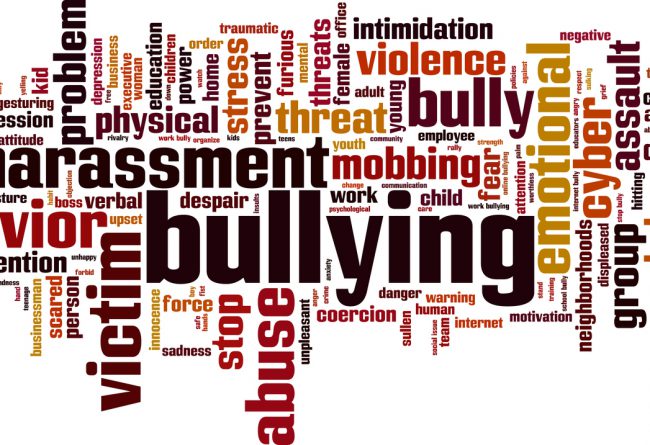Understanding and Keeping Up to Date with Workplace Harassment Training

Understanding and Keeping Up to Date with Workplace Harassment Training
Workplace harassment is verbal or physical assaults that target individuals or groups based on protected characteristics, such as race, gender, age, religion, or disability. The behavior creates a hostile or uncomfortable work environment that affects an individual or group’s ability to perform their job.
Bystander intervention training is an important way to combat workplace harassment, as bystanders are individuals who witness a situation in which someone needs help. By providing adequate training and guidance, bystanders can go from being passive onlookers who may recognize that a situation is harmful to actively intervening and providing support to victims of workplace harassment.
A Closer Look at Workplace Harassment
Harassment can take various forms, from derogatory comments and cyberbullying to unwanted physical touch. But what makes workplace harassment doubly concerning is that it doesn’t just affect the targeted individual or group but also negatively affects the organization by undermining morale, decreasing productivity, and damaging feelings of safety and inclusivity.
Statistics show that those individuals in protected classes are more likely to experience workplace harassment, with more than 8 percent of women experiencing workplace sexual harassment and more than one in four black employees experiencing racial discrimination at work.
According to a 2021 All Voices survey, 44 percent of workers have experienced some form of workplace harassment. Of those respondents, only 53 percent reported that their workplace immediately addressed the concerning behavior, and nearly 15 percent said no action was taken against the perpetrator.
The Bystander
A bystander is someone who witnesses a situation in which someone needs help but does not become actively involved. In other words, a bystander remains a passive onlooker, despite having an understanding that help is needed. Often, people remain bystanders, because they are unsure of how to help, are afraid to become involved, and have not received adequate training in how to intervene in such situations safely.
Passive bystanders often unknowingly perpetuate harassing situations, particularly in the workplace. By witnessing the behavior and not acting to stop it, perpetrators may feel that bystanders agree with their actions or are not bothered by the situation.
Importance of Bystander Training
Bystander training provides vital elements that help bystanders feel safe, educated, and confident in workplace interventions. It encourages employees to develop awareness and empathy toward those who experience it. It also provides a framework for recognizing, reporting, and responding to workplace harassment, including how to properly document what has occurred. Finally, it provides strategies for de-escalating potentially hostile situations so the problem doesn’t worsen.
Bystanders play an essential role in reducing harassing behavior. They are third-party witnesses, which provides impartiality and the opportunity to intervene as the harassing behaviors are not directed at them. By collectively maintaining zero-workplace tolerance for harassing behaviors, trained bystanders also help create a safe community where their co-workers feel more comfortable and productive.
Air Force Offer Bystander Training to Government Employees
Many government organizations are already realizing the benefits of bystander intervention training in reducing workplace harassment, improving workplace safety, and improving organizational productivity and morale.
For example, the Air Force provides mandatory Bystander Intervention Training (BIT) to all military personnel and civilian supervisors. BIT’s intent is to help airmen better recognize negative behaviors and how to safely intervene to prevent, diffuse or ultimately report harassing situations. Airmen are taught strategies from direct intervention for active harassing scenarios to when to delegate the responsibility and report to a superior. BIT also trains airmen on distraction strategies, which can de-escalate situations. The result is that the Air Force community members now feel more educated and empowered to step in and mitigate harassing scenarios that can affect their fellow airmen.
States Mandate Sexual Harassment Prevention Training, But Not Bystander Training
In the United States, sexual harassment prevention training is mandated at the state level for employees by seven states and the District of Columbia; four states strongly encourage training. The remaining 39 consider such training a best practice but do not require it.
However, more leaders are beginning to understand the critical and complementary role bystander intervention training plays in reducing workplace harassment. Some governmental entities are starting to include bystander intervention training as part of this program or require it in addition to standard harassment training programs. For example, as of 2023, the New York Department of Labor includes bystander intervention training in the state’s mandated sexual harassment prevention training.
In January 2023, the Chicago City Council amended its Human Rights Ordinance to include a requirement of one hour of sexual harassment prevention training and one hour of bystander intervention training annually. This training teaches participants how to reinforce standards of conduct expected within their workforce community, from defusing the situation to how to safely interrupt, and even assist the target in exiting the situation. This coursework also provides important information on why victims are often unwilling to report such behavior as well as the laws that provide protection from workplace harassment. Finally, this type of training also reinforces the responsibility that employees have as bystanders in maintaining conduct norms and refusing to tolerate such behaviors in the workplace.
Enterprise Training Solutions provides bystander intervention training as part of our comprehensive Harassment Prevention course programming. Our courses are specific to job roles, and geographic location, and we even offer coursework for remote workplaces. Visit our Harassment Training course descriptions to learn more.


